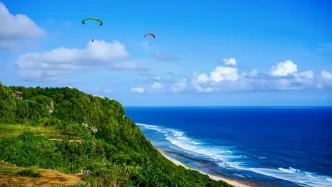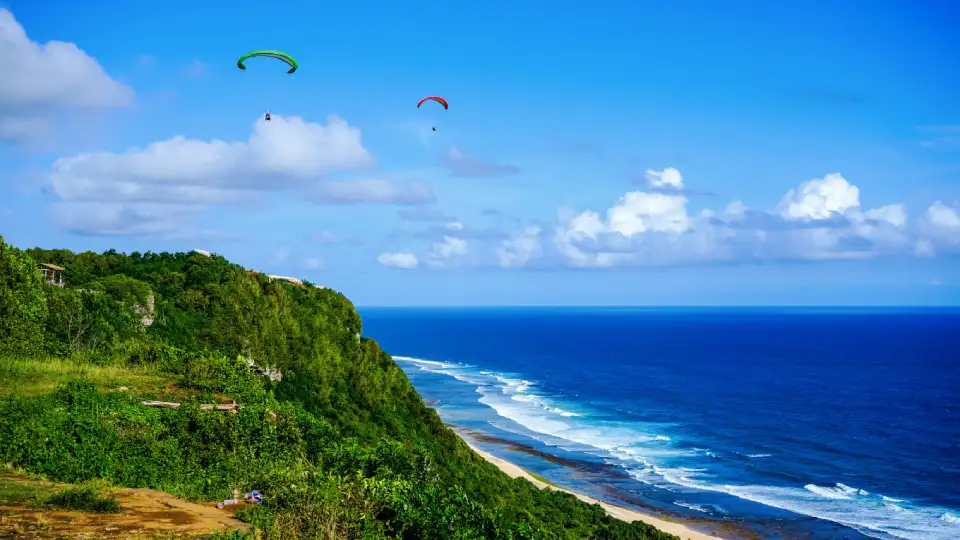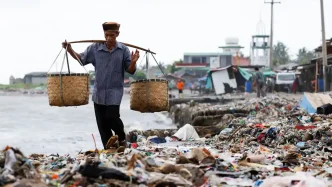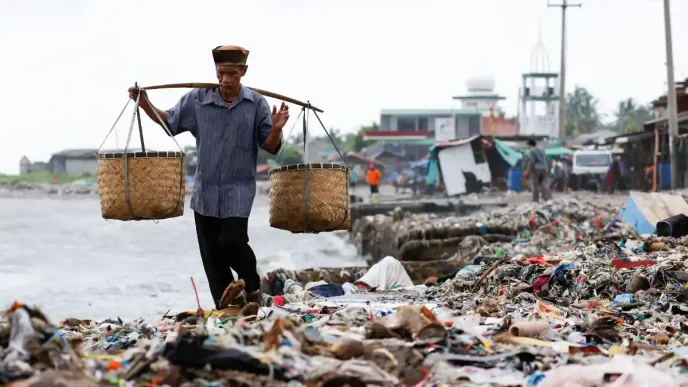Two South Korean tourists lost their lives in a paragliding accident last week at Tanah Barak Beach in Bali’s Badung Regency, casting a shadow over the island’s reputation as a haven for adventure tourism. The incident, which occurred on July 17, 2025, is the latest in a series of fatal accidents involving foreign visitors in Indonesia, raising urgent questions about safety protocols for high-risk activities in one of the world’s most popular tourist destinations.
A Fatal Misstep in the Skies
The victims, identified as Seojin Han, 43, and Jinah Hwang, 41, a married couple, were experienced paragliding pilots who had traveled to Bali for a paragliding tour with a group of seven other South Korean nationals. According to Denpasar Police spokesperson Adj. Comr. Ketut Sukadi, the couple arrived on the island on July 11 and had been flying solo at the Panda Paragliding Site in South Kuta since the following day. Both were licensed professionals who had undergone medical checks in South Korea and were deemed fit to fly.
On the morning of the accident, Han, Hwang, and a third member of their group took off around 11:30 a.m. Barely ten minutes into their flight, an abrupt shift in wind conditions forced them to attempt emergency landings. While the third paraglider managed to land safely on the beach, Han and Hwang descended into the sea just four meters from shore. Unable to release their harness cocoons—a specialized seat that encloses a pilot’s legs for aerodynamic efficiency and warmth—they became entangled in their parachute lines and drowned, as explained by Sukadi during a press briefing on July 23, 2025.
Local residents and a fellow paraglider pulled the couple from the water after approximately 15 minutes. They were rushed to Surya Husada Hospital, where they were pronounced dead on arrival. Authorities are now investigating whether negligence contributed to the tragedy, with plans to interview fellow paragliders, instructors, and staff at the Panda Paragliding Site. The victims’ families have opted against autopsies and will cremate the bodies in Bali before returning the ashes to South Korea.
A Pattern of Tragedy
This accident is not an isolated incident in Bali or the broader Indonesian archipelago, where adventure tourism has surged in popularity. Just weeks earlier, on July 8, 2025, a Saudi Arabian tourist went missing while swimming off Batu Belig Beach, also in Badung Regency. Despite extensive search and rescue efforts, the individual remains unaccounted for. Further back, on June 21, 2025, a 27-year-old Brazilian hiker, Juliana De Souza Pereira Marins, died after falling into a 600-meter-deep ravine in Mount Rinjani National Park on Lombok Island, West Nusa Tenggara. Rescue operations, hampered by adverse weather and challenging terrain, took three days to reach her, by which time she had already passed away.
The delayed response in Marins’ case has sparked international criticism, particularly from Brazilian citizens, placing Indonesia’s tourism safety measures under intense scrutiny. These recurring incidents highlight the risks associated with adventure activities in regions where infrastructure and emergency response systems may not always match the influx of international visitors seeking thrills in exotic locales.
The Risks of Adventure Tourism
Paragliding, hiking, and water sports are among the key draws for tourists visiting Bali and surrounding islands. Yet, these activities carry inherent dangers, particularly when weather conditions change suddenly or when participants—however experienced—lack immediate access to emergency support. In the case of Han and Hwang, the inability to quickly disengage from their harness cocoons in water underscores a critical safety gap. Harness cocoons, while beneficial for long flights due to their design for comfort and reduced drag, can become deadly traps if a pilot lands in water and cannot escape swiftly.
Indonesia’s tourism industry, a vital economic driver, has long promoted Bali as a paradise for adventure seekers. The island alone welcomed over six million foreign tourists in 2023, according to government data, with numbers expected to climb in 2025. However, the absence of stringent, standardized safety regulations for adventure sports operators often leaves tourists vulnerable. While Han and Hwang brought their own equipment and flew without tandem instructors, questions remain about whether the Panda Paragliding Site provided adequate briefings on local conditions or emergency procedures.
Calls for Reform
The string of fatalities has amplified calls for improved oversight of adventure tourism in Indonesia. Local authorities in Bali have pledged to review safety protocols at popular paragliding and hiking sites, though concrete measures remain unclear. The Indonesian government faces a delicate balance: tightening regulations could deter tourists and impact local businesses, yet inaction risks further tragedies and damage to the country’s global image as a safe destination.
For now, the focus in Bali remains on supporting the families of Han and Hwang as they navigate their loss. The broader question looms—how many more incidents will it take before safety becomes as much a priority as the allure of adventure in Indonesia’s tropical paradise?
















